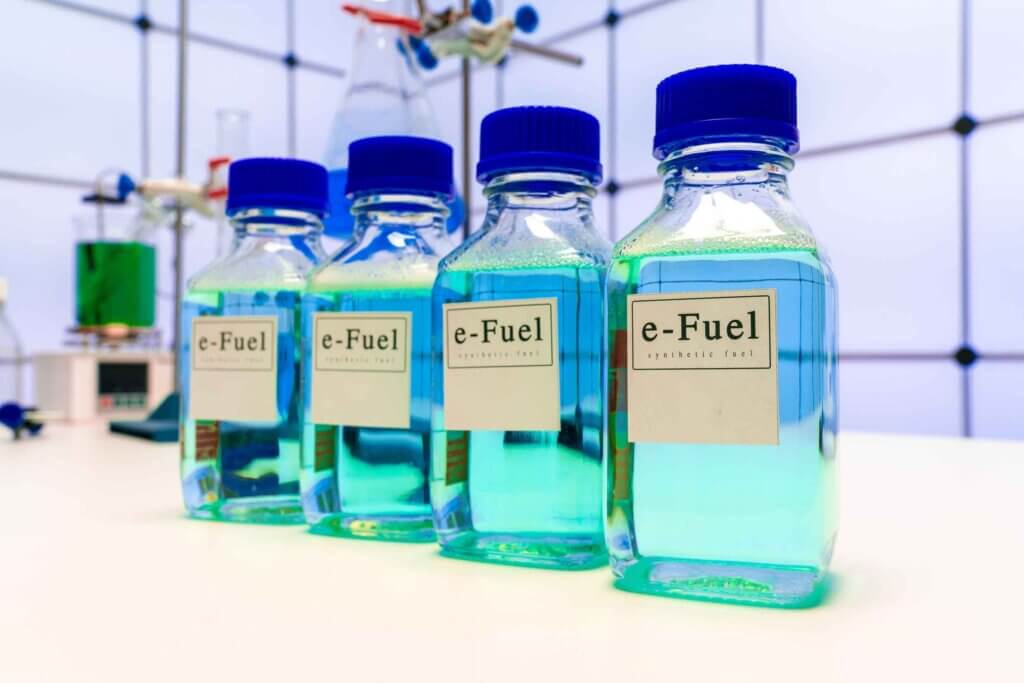
Stellantis has confirmed it is finalizing testing of e-fuels on 28 engine families to help accelerate the carbon emissions reduction potential of the 28 million Stellantis internal combustion engines (ICE) built since 2014 (Euro 6) in Europe.
However, it says it is remaining committed to selling only BEV passenger cars in the region by the end of the decade.
As part of the toolbox available to reduce carbon emissions and fight against climate change, e-fuel is a drop-in replacement synthetic fuel made from captured atmospheric CO2 and renewable energy.
GlobalData analysis suggests that synthetic e-fuels may now be allowed to form part of the powertrain mix for new light vehicles in Europe beyond 2035, but many headwinds to deployment remain.
E-fuels would offer customers with existing ICE vehicles a route to decarbonize their vehicles without needing to replace their vehicle, upgrade the engine fuel system or await a new infrastructure network.
“We are doubling down on our fight against global warming by testing carbon-neutral fuel as a complementary solution to our holistic decarbonization approach. While we remain steadfast in executing our aggressive electrification strategy, we must also find smart alternatives to address the CO2 emissions for the 1.3 billion existing ICE cars,” said Stellantis CEO Carlos Tavares. “By working to make sure our Stellantis engines are e-fuels friendly, we are aiming at giving our customers another tool in the fight against global warming and one that can have an almost immediate impact. It is also another action we are taking that is well aligned with our commitment to be carbon neutral by 2038.”
How well do you really know your competitors?
Access the most comprehensive Company Profiles on the market, powered by GlobalData. Save hours of research. Gain competitive edge.

Thank you!
Your download email will arrive shortly
Not ready to buy yet? Download a free sample
We are confident about the unique quality of our Company Profiles. However, we want you to make the most beneficial decision for your business, so we offer a free sample that you can download by submitting the below form
By GlobalDataStellantis is testing and validating 28 engine families built from 2014 to 2029 for both gasoline and diesel engines. The comprehensive validation protocol includes tests on tailpipe emissions, startability, engine power, reliability endurance, oil dilution, fuel tank, fuel lines and filters, to name a few. The use of e-fuel in the up to 28 million vehicles in the Stellantis fleet has the potential to reduce up to 400 million tons of CO2 emissions in Europe from 2025 through 2050.
Stellantis also points out the production of e-fuel is an opportunity to reimagine energy sovereignty by redefining the energy sourcing map based on the availability of wind belts and sun belts, not on current fossil fuel extraction locations.
Stellantis is investing more than €30 billion through 2025 in electrification and software to deliver battery electric vehicles that meet customer demands. The company also maintains it studies complementary solutions to continue CO2 emission reduction efforts to meet its commitment to offer clean, safe and affordable mobility solutions for society at large.
Stellantis’s long-term strategic plan Dare Forward 2030 is led by deep emission cuts to slash CO2 in half by 2030, benchmarking 2021 metrics, and achieve carbon net zero by 2038 with single digit percentage compensation of the remaining emissions.
Core targets for Dare Forward 2030 also include 100% of passenger car sales in Europe and 50% of passenger car and light-duty truck sales in the United States to be BEVs by the end of the decade; the ambition of doubling Net Revenues by 2030 (versus 2021) and sustaining double-digit Adjusted Operating Income margins throughout the decade; and the aim to become number one in customer satisfaction for products and services in every market by 2030.
See also: Will Europe’s BEV market be derailed by e-fuels?







